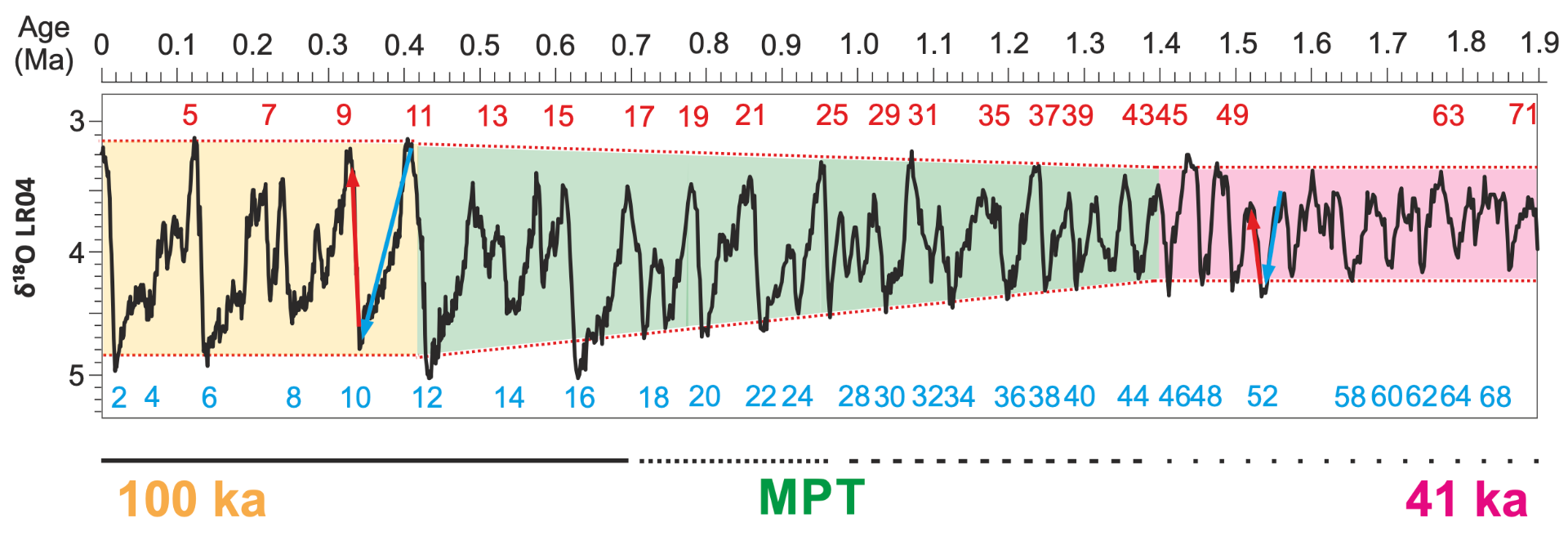Oxygen-18 thermometer in carbonate
One of the first quantitative geochemical paleothermometers is based on the oxygen-18 composition (δ18O) of oxygen-bearing minerals such as carbonates. In a landmark study, Urey (1947) calculated the temperature sensitivity of 18O/16O equilibrium fractionation between calcium carbonate and water, and described how the isotopic composition of marine...







